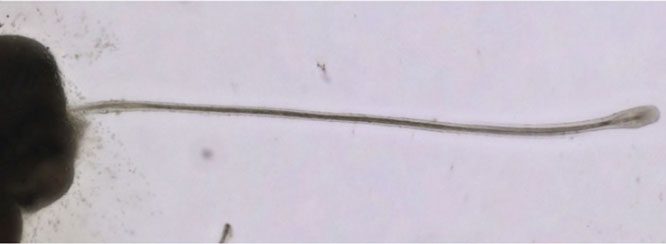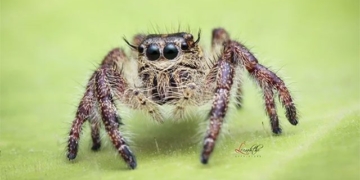Scientists Create Fully Mature Hair Follicles with Hair Stems Approximately 3 mm Long After 23 Days of Cultivation.
A team of Japanese scientists has developed hair follicles in a cultured environment, showing potential for applications in hair loss treatment, animal testing, and drug screening. This new research was published in the journal Science Advances on October 21.

Hair developed from one of the cultured hair follicle organoids. (Photo: Yokohama National University).
The hair follicles develop through a process called morphogenesis, where the outer layer of skin and connective tissue interact during embryonic development. Scientists have been trying to understand the essential mechanisms of hair follicle development through animal models. However, they have not been able to replicate the hair follicle morphogenesis process in a cultured environment due to a lack of understanding of how these mechanisms function.
“Organoids (miniature organ-like structures cultured in the lab) are promising tools for elucidating the mechanisms of hair follicle development in vitro,” said Tatsuto Kageyama, an associate professor in the engineering department at Yokohama National University.
In this new study, the team developed hair follicle organoids by controlling the structure generated from two types of embryonic cells with an extracellular matrix. The extracellular matrix is a network that provides structure for cells and tissues in the body. These matrices alter the space between the two types of embryonic cells, transitioning from a dumbbell shape to a core-shell form. Subsequently, hair follicles with typical characteristics began to form within the core-shell cell group.
As a result, the organoid cultivation process produced hair follicles and hair stems with nearly 100% efficiency. Fully mature hair follicles with hair stems approximately 3 mm long were generated by the hair follicle organoids by day 23 of cultivation.
Additionally, the research team introduced a type of pigment-stimulating drug to enhance hair pigmentation in the cultured environment. Thanks to this drug, the pigmentation of the artificial hair strands was significantly improved. Moreover, they were able to regenerate hair follicles by repeating hair cycles after supplementing with hair follicle organoids.
This new research could help scientists understand how physiological and pathological processes progress in other organ systems. “Our next step is to use human-derived cells and apply them to drug development and regenerative medicine,” shared Junji Fukuda, a professor in the engineering department at Yokohama National University.





















































